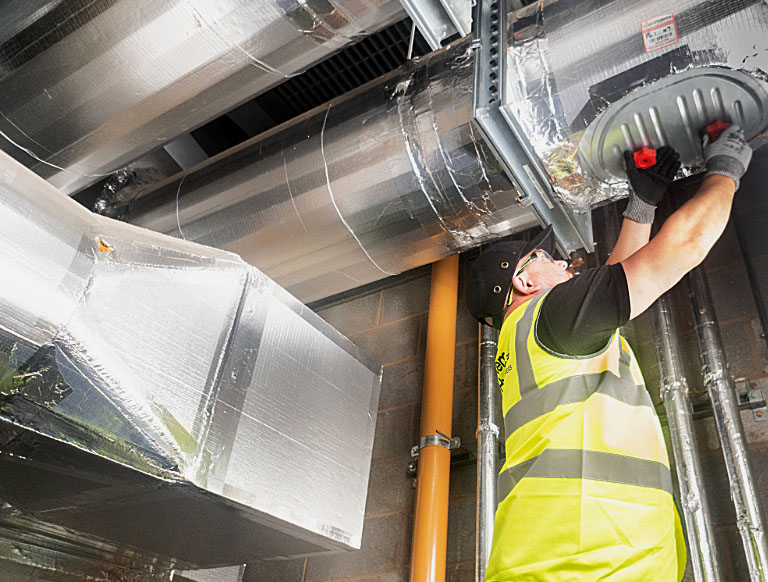A Day in the Life of a Sales Engineer
Learn more about the typical day of a System Hygienics Sales Engineer in this blog
.jpg)
During a site visit to Bolton University, we recently caught up with Jo, one of our experienced sales engineers.
Behind the Scenes with Jo: A Day in the Life of a Sales Engineer
Starting Strong: The Foundation of Every Site Visit
Jo's day doesn't begin when she arrives on site - it starts much earlier with thorough preparation. "I've normally had a catch-up with the site staff on how the job is progressing," she explains, "ensuring everything is okay and running on schedule, allowing me to give a full, comprehensive update to the client." This attention to detail and communication sets the tone for everything that follows.
This proactive approach reflects something deeper about Jo's work philosophy. When we asked about her first meetings with new clients, she emphasized the importance of listening: "I listen, learn about their site and needs, then clearly explain how we'll help them stay compliant." This combination of preparation and genuine engagement helps build the long-term trust relationships System Hygienics is known for.
The Rewarding Reality of Fire Safety Work
What drives someone to choose a career in fire safety compliance? Jo's answer is refreshingly straightforward: "I wanted a hands-on role with real-world safety impact - this industry offered both." That real-world impact becomes clear when she describes the most rewarding aspect of her work: helping clients meet compliance standards that ultimately protect lives.
But like any meaningful work, it comes with challenges. Jo points to access restrictions and missing information as common hurdles - issues that might seem minor but can significantly impact a building's fire safety systems. "Inaccessible dampers, missing records, and dampers requiring remedial actions" top her list of the most frequent compliance issues discovered during assessments. Compliance isn’t just paperwork – it saves lives. "Dampers save lives during a fire," she says firmly. "It's about real safety, not just paperwork."
Navigating an Evolving Industry
Jo has witnessed significant changes in fire safety technology and regulations throughout her career. "We now use digital reporting tools and improved traceability," she notes, highlighting how the industry has embraced technology to enhance accuracy and accountability. More recently, she's observed "more focus on proving competency and digital evidence of compliance" - what the industry calls "the golden thread" of documentation.
System Hygienics stays ahead of these regulatory changes through continuous learning. "We regularly update training, attend industry events, and adapt processes as guidance evolves," Jo explains. This commitment also extends to individual professional development - Jo maintains her expertise by attending CPD events, following BESA updates, and completing regular refresher training.
The Art of Balance
Managing the diverse demands of office work, client meetings, and site visits requires strategic thinking. Jo's approach is structured yet flexible: "I block out time for each during the week and stay flexible for urgent tasks." This balance becomes particularly important when working with educational institutions like universities, which present unique "scheduling constraints" compared to other sectors.
Busting Myths and Building Trust
One common misconception Jo regularly encounters that needs addressing is, "If a fire damper looks fine, it is fine." The reality is that "dampers can silently fail without testing, or be installed incorrectly / fire stopped incorrectly." This hidden nature of fire damper failures makes regular testing not just advisable but essential.
Jo's advice for facilities managers looking to improve their building's safety compliance is practical and actionable: "Know your legal duties, keep records up to date, and make sure all dampers are accessible and maintained." She also recommends asking two crucial questions often overlooked: "When were they last tested?" and "Are they all accessible for inspection?"
What Sets System Hygienics Apart
When asked what distinguishes System Hygienics from competitors, Jo's response captures the company's core philosophy: "We focus on quality, transparency, and long-term trust - not ticking boxes or rushing jobs." This approach treats fire safety compliance not as a necessary evil but as a critical responsibility deserving of expertise, care, and a genuine commitment to protecting lives.

.jpg)
.jpg)
